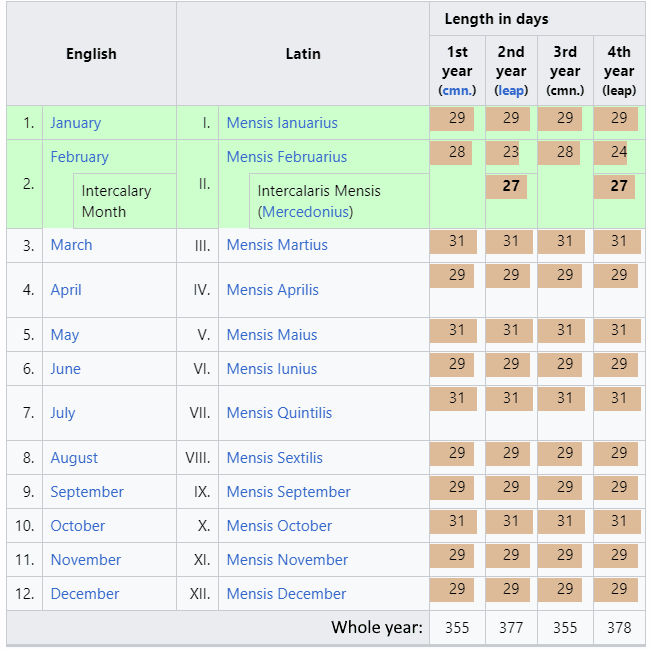For the past four hundred years, much of the modern world has been using the Gregorian calendar. As we are all familiar, this calendar has 12 months, 365 days in a year and an extra day every leap year. Leap years occur every four years except for years that are exactly divisible by 100, unless they are also exactly divisible by 400. Introduced by Pope Gregory XIII in 1582 as a reform of the Julian calendar, the Gregorian calendar is universally accepted because it is regular and easy way to understand. But it wasn’t always like this.

The Roman Calendar
Before the Gregorian calendar was adopted, the Julian calendar was the closest we had to the actual solar calendar. It was this calendar which added one extra day every four years, giving us “leap years”, based on the calculation that the earth takes 365.25 days to go around the sun. Although a vast reform over the existing Roman calendar, this calculation was not entirely correct. The sun, in fact, takes an additional 11.5 minutes to complete the circuit. This may seem like a small amount, but the figure builds up over a large number of years, and by the 16th century, when the reform was made, the Julian Calendar was ahead by more than 10 days.
The Julian Calendar itself was created by Julius Caesar in 46 BC in order to fix the inherent errors of a lunisolar calendar, which the Roman calendar was. The Roman calendar consisted of 12 months for a total of 355 days, which is approximately 10 days shorter than the solar year. In order to catch up with the sun, the Roman calendar added either 22 or 23 days to every alternate year, the same way we add leap days every four years. As a result, Roman years alternated between 355, 377 and 378 days.

The Roman Republican year before the reforms by Julius Caesar. Courtesy: Wikipedia
To make matter worse, the leap days (also known as the intercalary period) were not added in a regular and systematic manner, but was determined by the Pontifex maximus, the high priest of the College of Pontiffs. Often the Pontifex would abuse his power and lengthen a year when his political allies was in office, and reduce it when his opponents were in power. The net effect of this was that the average Roman citizen often did not have a clue what date the current day was.
With the intention of sorting out the mess, Caesar called the best philosophers and mathematicians in town and asked them to create a calendar that kept sync with the sun without human intervention. At that time, it was thought that a year lasted 365 days and 6 hours. So Caesar’s mathematicians called for a calendar 365 days long, with an additional day added every four years to makeup for the 6 lost hours every year. In reality, the earth takes 365 days, 5 hours, 48 minutes and 45 seconds to go around the sun once, so the Julian calendar was not exactly accurate. But it was still a vast reform over the existing Roman calendar which was a mess.
Julius Caesar wanted the new year of the new calendar to begin on January 1 rather than in March. So he added 67 days to 46 BC, stretching the year to a whopping 445 days. Caesar called it the “last year of confusion”, but people simply called it the “year of confusion” or annus confusionis.
The new year, according to Julian calendar, began on January 1 45 BC. A year later, Caesar was assassinated. Mark Anthony then changed the name of the Roman month Quintilis to Julius (July) to honor him. Later, the month of Sextilis was renamed Augustus (August) after his successor.



Comments
Post a Comment